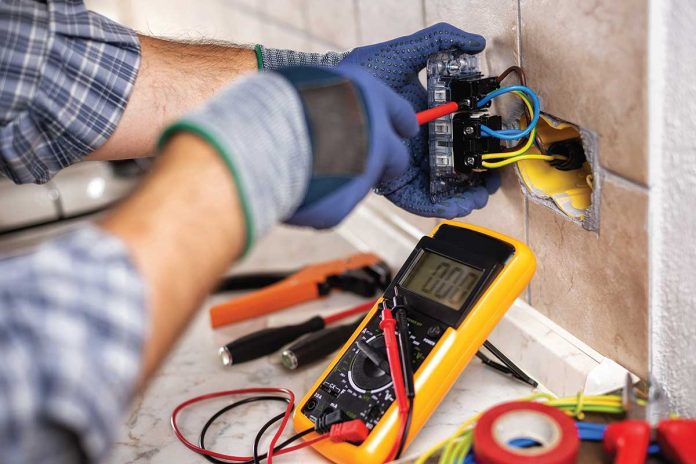Upgrading your home’s electrical system is a smart way to increase its functionality, improve energy efficiency, and enhance safety. However, electrical work can be dangerous if not done properly. Understanding the best practices for safely upgrading your home’s electrics can help prevent hazards like electrical fires and shocks. Here’s a guide to safely navigating electrical upgrades in your home.
Assess Your Current Electrical System
Before starting any upgrades, assess your home’s current electrical system. Determine whether your wiring is outdated or if your home’s electrical load has increased due to new appliances, lighting, or other energy demands. Some key indicators that an upgrade might be necessary include:
- Frequent Tripping of Circuit Breakers: This is a sign that your system is being overloaded.
- Flickering or Dimming Lights: Especially when using multiple appliances, this may indicate insufficient power supply.
- Outdated Wiring: If your home has aluminum wiring or knob-and-tube wiring, it may be time for an upgrade.
- Lack of Grounding: Homes built before the 1960s often lack grounding in their electrical systems, which can be dangerous.
If you’re unsure about the condition of your current system, consider having a licensed electrician conduct an inspection to identify potential issues.
Plan for Increased Capacity
Modern homes require significantly more electrical capacity than older homes due to the proliferation of electrical devices and appliances. If you’re upgrading, it’s essential to plan for increased electrical demand to avoid overloading circuits. Here’s how:
- Upgrade to a Higher Amperage Panel: Many older homes have 100-amp service panels, which may not be sufficient for modern electrical needs. Upgrading to a 200-amp or higher panel can provide more capacity for additional circuits, appliances, and future needs.
- Install Dedicated Circuits: High-energy appliances such as air conditioners, ovens, and washing machines should be on their own dedicated circuits to prevent overloads.
Prioritize Safety with Circuit Breakers and GFCIs
When upgrading your home’s electrical system, installing new circuit breakers and GFCI (ground fault circuit interrupter) outlets is essential for safety. These devices help protect your home from electrical fires and shocks:
- Circuit Breakers: Modern circuit breakers automatically shut off power to a circuit if an overload or short circuit occurs, preventing potential fire hazards.
- GFCI Outlets: Required in areas where moisture is present, such as bathrooms, kitchens, and outdoor spaces, GFCI outlets shut off the power if they detect an imbalance in electrical current, protecting against electric shock.
Ensure that GFCIs are installed in any area where water and electricity could potentially come into contact.
Use the Right Materials
Using the right materials and tools is key to a safe and long-lasting electrical upgrade. Low-quality materials or improper tools can result in faulty connections and increase the risk of fire or electric shock. At powerpointelectrics.co.uk, you will find the right materials and tools for your project. When upgrading your home’s electrics:
- Purchase Quality Components: Use certified electrical wires, breakers, outlets, and switches that meet safety standards.
- Use the Correct Wire Gauge: Electrical wires come in different gauges, which are designed to handle different amounts of current. Using the wrong gauge wire can lead to overheating and potential fire hazards. For example, 12-gauge wire is commonly used for 20-amp circuits, while 14-gauge wire is used for 15-amp circuits.
- Insulate Wires Properly: Ensure all wires are properly insulated to prevent short circuits and shocks.
Update Wiring
Old or faulty wiring is one of the most common causes of electrical fires. When upgrading your home’s electrical system, it’s important to replace outdated wiring with modern, safer options:
- Replace Aluminum Wiring: Aluminum wiring, commonly used in the 1960s and 1970s, can overheat and is more prone to causing fires compared to copper wiring. If your home has aluminum wiring, consider replacing it with copper.
- Upgrade Knob-and-Tube Wiring: Homes built in the early 20th century may have knob-and-tube wiring, which lacks grounding and poses a significant fire risk. Upgrading this wiring is essential for safety.
Modern electrical wiring not only improves safety but also supports the higher electrical loads of contemporary homes.
Add Sufficient Outlets
Older homes often lack sufficient electrical outlets, leading to the overuse of power strips and extension cords, which can increase the risk of overheating. When upgrading your home’s electrics:
- Install More Outlets: Consider adding more outlets to high-demand areas such as kitchens, home offices, and entertainment spaces.
- Install USB-C and USB-A Charging Ports: Many modern outlets come with built-in USB ports, providing additional convenience and reducing the need for bulky adapters.
Adding outlets is a simple upgrade that can reduce electrical hazards and improve the functionality of your home.
To Conclude
Upgrading your home’s electrical system can enhance safety, energy efficiency, and overall comfort. Whether you’re adding new outlets, upgrading the electrical panel, or rewiring part of your home, it’s important to follow safety protocols, use the right materials, and adhere to local building codes. While some projects can be tackled by experienced DIYers, more complex jobs should be entrusted to a licensed electrician. By taking the necessary precautions, you can ensure that your electrical upgrades are both safe and effective.













